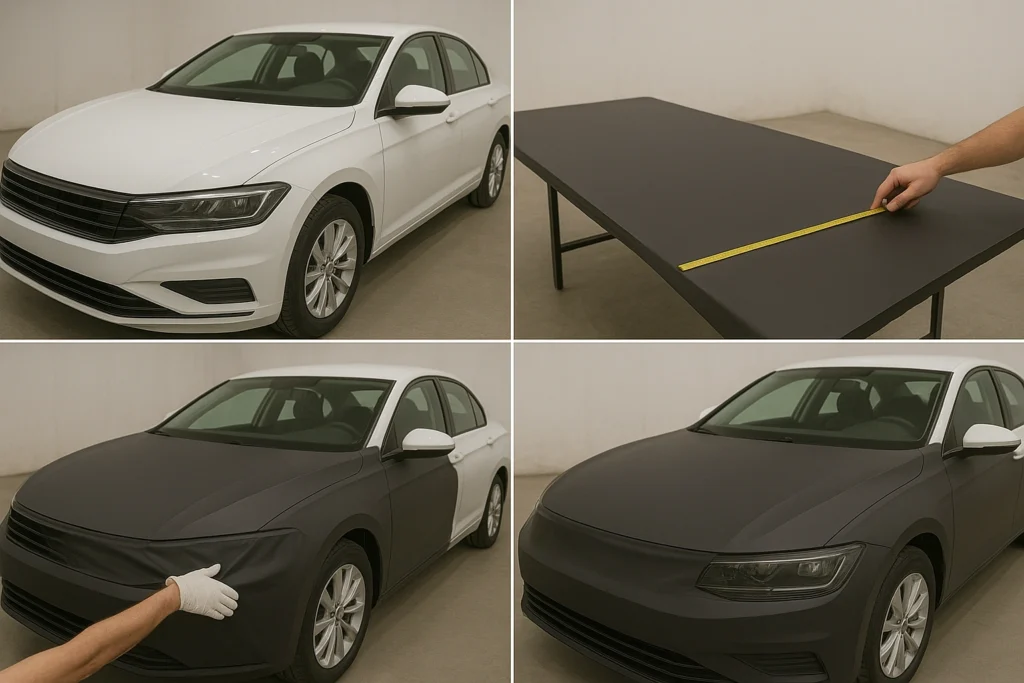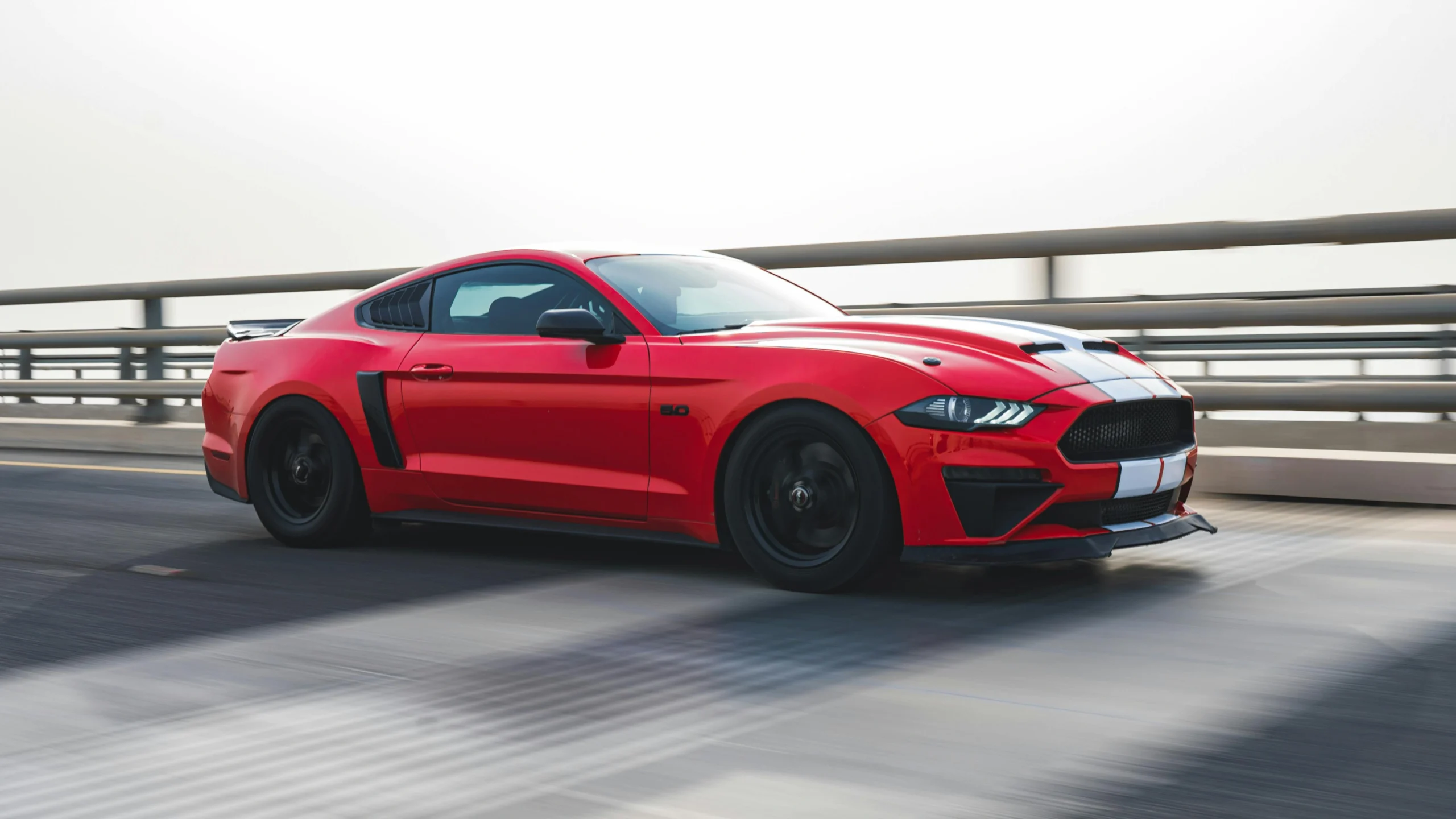Introduction
Ever wondered how professionals transform dull car paint into a sleek matte or glossy finish with vinyl wrap? The car wrap installation process may look intimidating, but with the right tools, patience, and step-by-step guidance, even DIY enthusiasts can get impressive results. In this guide, we’ll walk you through the car wrap installation process from preparation to finishing, highlight expert tips, and share cost-saving strategies. Whether you’re a DIY car owner or an auto shop professional, this guide will help you avoid mistakes and achieve a flawless finish.
Key Takeaways
- Learn the step-by-step car wrap installation process with beginner-friendly instructions.
- Discover the tools needed to wrap a car and avoid common mistakes.
- Save money with DIY car wrapping while understanding when to call a pro.
- Compare vinyl finishes (gloss vs matte) for durability and style.
- Get expert installer tips for long-lasting vinyl wrap application.
Step 1: Preparing the Vehicle
Before applying any vinyl, preparation is everything. A clean, smooth surface ensures proper adhesion and prevents bubbles or peeling.
Preparation Checklist:
- Wash and dry the car thoroughly (avoid wax or polish).
- Clay bar treatment to remove surface contaminants.
- Remove parts like mirrors, badges, and trim for easier wrapping.
Installer Tip: “90% of a perfect wrap comes down to prep work. If the surface isn’t clean, even premium vinyl won’t stick.” (Mike Reynolds, Certified 3M Installer)
Step 2: Measuring and Cutting the Vinyl
Proper measurement reduces waste and ensures seamless application. Use a measuring tape and add 4–6 inches extra on all sides for adjustments.
Pro Tips:
- Work in sections (hood, roof, doors) instead of attempting the entire car at once.
- Store vinyl in a clean, dust-free space to prevent contamination.
Step 3: Applying the Vinyl Wrap
Now comes the main step, carefully applying the vinyl.
Installation Process:
- Peel and position vinyl on the panel.
- Use a squeegee to push air out from the center outward.
- Apply heat (with a heat gun) to stretch around curves and edges.
- Trim excess vinyl with a precision knife.
DIY Warning: Avoid overstretching vinyl, this weakens durability and can cause color distortion.
🔗 For cost comparisons, check the cost of wrapping a car.
Step 4: Finishing Touches
After application, finishing details determine whether the wrap looks professional.
Final Steps:
- Reinstall removed parts (mirrors, trims, lights).
- Use heat to set the vinyl edges permanently.
- Inspect for air bubbles and fix with a pin or squeegee.
Comparison Table: Gloss vs Matte Wrap Finishes
| Feature | Gloss Vinyl Wrap | Matte Vinyl Wrap |
| Look | Shiny, paint-like | Flat, modern |
| Maintenance | Needs frequent cleaning | Hides dirt better |
| Durability | 5-7 years | 4-6 years |
| Popular Brands | 3M Gloss, Avery Gloss | Hexis Matte, 3M Matte |

🔗 Maintain your wrap long-term with this vinyl wrap maintenance guide.
Conclusion
The car wrap installation process requires patience, the right tools, and attention to detail, but the results can completely transform your vehicle’s look. By following this step-by-step guide, you’ll avoid common mistakes and achieve a finish that rivals professional shops. Whether you’re going for a glossy showroom shine or a matte stealth look, preparation and precision are key.
👉 Ready to start your project? Explore our guide on tools needed to wrap a car and take the first step toward your DIY wrap today!
Vinyl Wrap FAQs (People Also Ask)
The cost of car wrap installation ranges from $2,000 to $5,000 for a full vehicle, depending on size, vinyl brand, and finish.
Premium brands like 3M or Avery Dennison typically cost more but offer longer durability and better color retention. DIY enthusiasts can save $500–$1,500 by purchasing vinyl rolls and doing it themselves, but improper installation can reduce the lifespan of the wrap. Installer Tip: Always factor in prep work and removal of parts like mirrors and badges, as skipping this can increase labor time and cost.
Professionally installed vinyl wraps last 5-7 years, while DIY wraps may last 3-5 years, depending on maintenance and climate.
Gloss finishes like 3M Gloss tend to show scratches more easily but are easier to clean, whereas matte wraps hide dirt better but require careful handling to prevent permanent marks. Regular washing, avoiding harsh chemicals, and parking in shaded areas significantly extend durability. For long-term care tips, check our vinyl wrap maintenance guide.
DIY wrapping is possible, but hiring a professional ensures a flawless finish and avoids common mistakes like bubbles or stretching.
Beginners often struggle with curves, edges, and large panels. Doing it alone increases the risk of wrinkles, while two people make the process easier.
DIY Warning: Overstretching vinyl weakens adhesive and can distort color. Following step-by-step guides from brands like 3M and Hexis can help, but an extra pair of hands is highly recommended.
Gloss wraps provide a shiny, paint-like finish and easier cleaning, while matte wraps offer a modern, subtle look and better scratch concealment.
Gloss wraps (3M Gloss, Avery Gloss) are ideal for show cars and commercial vehicles that need a polished appearance. Matte wraps (3M Matte, Hexis) are popular for stealth and luxury cars, but fingerprints and smudges show easily, requiring careful cleaning. Choosing the right finish depends on aesthetics, maintenance willingness, and usage.
Yes, vinyl wraps act as a protective layer against minor scratches, UV damage, and road debris.
While wraps don’t replace regular paint protection films, they prevent paint fading and reduce damage from small impacts. For optimal protection, consider applying a high-quality vinyl and following proper installation techniques.
Installer Tip: Ensure the vehicle surface is perfectly clean before wrapping; contaminants can cause permanent marks under the vinyl.
For a standard sedan, you’ll need about 50–65 feet of vinyl (roughly 5–6 rolls), depending on brand and coverage.
Larger vehicles like SUVs or trucks require more material. Always add 4–6 extra inches per panel for trimming and adjustments. Premium brands like Avery Dennison and 3M recommend storing unused vinyl in a clean, dust-free area to prevent contamination. For more guidance on vinyl types, quantities, and costs, see our tools needed to wrap a car guide
The most common mistakes include poor surface prep, overstretching vinyl, and ignoring edges or corners.
Bubbles, wrinkles, and peeling often result from skipping cleaning steps or using low-quality vinyl. Always work in sections, use a squeegee from the center outward, and apply heat carefully to curves.
Installer Tip: Take your time and don’t rush, preparation is 90% of a professional-looking wrap.
A professionally installed vinyl wrap usually lasts 5-7 years, while a DIY wrap may last 3-5 years depending on quality and maintenance.
Factors like UV exposure, climate, cleaning habits, and the vinyl brand (3M, Avery Dennison) impact durability. Gloss wraps are easier to clean but show scratches, whereas matte wraps hide dirt but require careful handling. Regular washing, avoiding harsh chemicals, and shaded parking can significantly extend lifespan. For detailed maintenance tips, check our vinyl wrap maintenance guide
Yes, but you’ll likely struggle with precision. Removing parts allows the vinyl to tuck neatly, giving a professional look and reducing the risk of peeling at edges.
A full wrap for a standard sedan requires 50-65 feet of vinyl (about 5-6 rolls), depending on car size and wrap brand (3M, Avery Dennison, Hexis).
While it’s possible, wrapping is easier with two people. One holds and stretches the film while the other applies and smooths it.
Check out these:
Diy vs professional car wrap installation
How to Remove Vinyl Wrap Safely (Cars & Trucks)
How long does it take to wrap a car?
Can you wrap over bad paint or scratches?
What temperatures are best for installation?
How to fix peeling edges on a wrap
Gloss vs Matte vs Satin vs Chrome: Which Finish Should You Choose?

